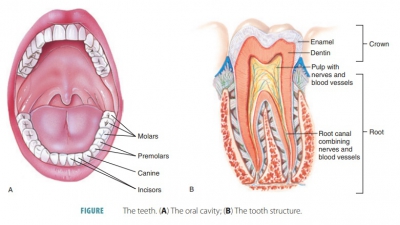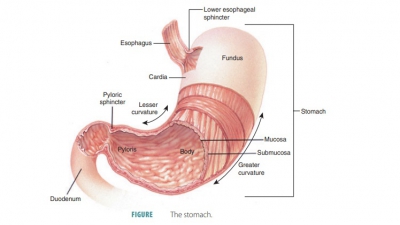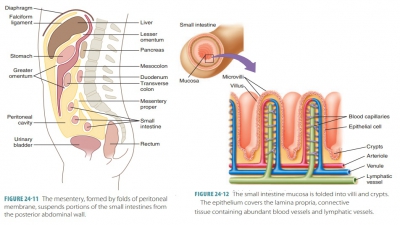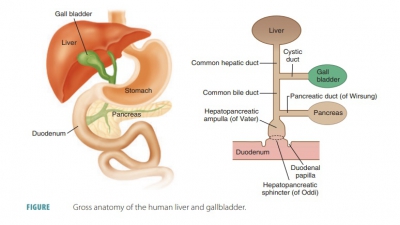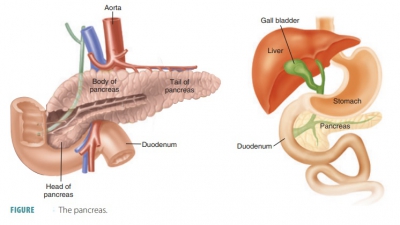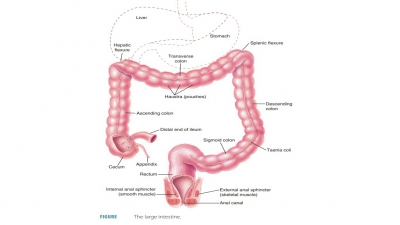Gallbladder
| Home | | Anatomy and Physiology | | Anatomy and Physiology Health Education (APHE) |Chapter: Anatomy and Physiology for Health Professionals: Digestive System
The gallbladder is a pear-shaped, green-colored sac located in a depression on the inferior surface of the liver, which is mainly a storage organ for bile.
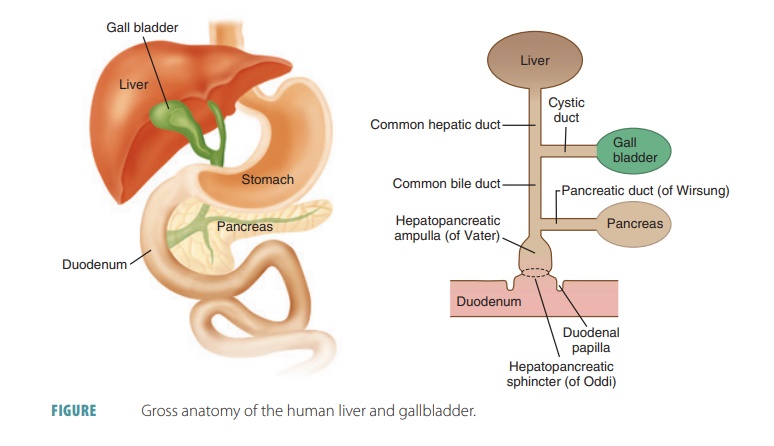
Gallbladder
The gallbladder is a pear-shaped, green-colored sac located in a depression on the inferior surface of the liver, which is mainly a storage organ for bile. A rounded fundus protrudes from the fossa in which it resides. It is connected to the cystic duct, which joins the common hepatic duct. The gallbladder has a thin epithelial lining and strong muscles in its wall and is about 10 cm or 4 inches long. It stores bile not immediately needed for digestion, reabsorbs water, and contracts to release bile into the small intestine. The gallbladder concentrates bile by absorbing certain amounts of its water and ions.
The common bile duct is formed by the joining of the common hepatic and cystic ducts. It leads to the duodenum via a chamber called the duodenal ampulla, where the hepatopancreatic sphincter is normally contracted. The duodenal ampulla opens into the duodenum at a small mound called the duo-denal papilla. As bile collects in the common bile duct, it backs up into the cystic duct and flows into the gall-bladder for storage. This occurs because of contrac-tion of the gallbladder’s muscular walls.
Bile usually enters the duodenum once cholecys-tokinin stimulates gallbladder contraction. The hepa-topancreatic sphincter is contracted until a peristaltic wave in the duodenal wall influences its relaxation, passing bile into the small intestine.
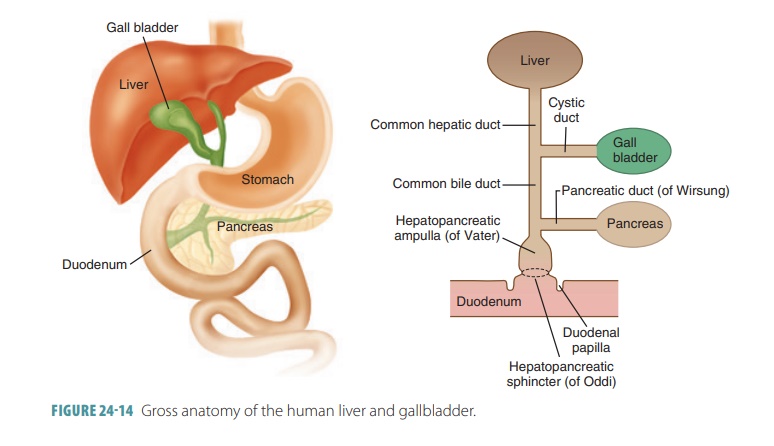
Intestinal Hormones
A variety of peptide hormones, with similar chemical structures, are secreted by the intestinal tract. Many of the hormones have numerous effects in different areas of the GI tract as well as in the accessory glandular organs. The hormones that help control digestion are listed in TABLE 24-6.
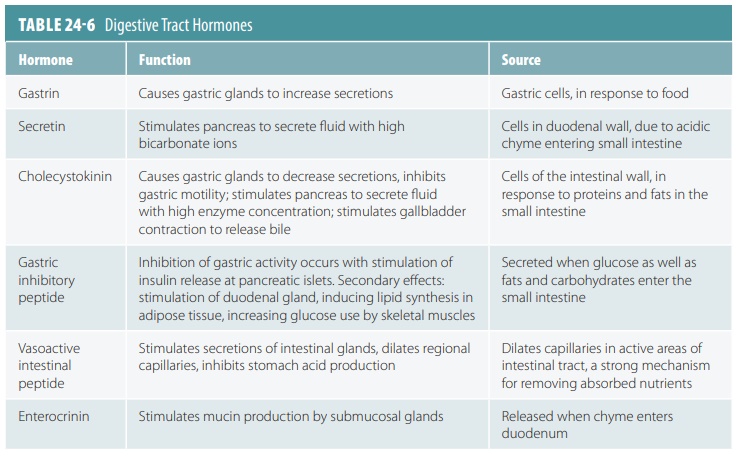
1. Describe the function of the hormone secretin.
2. What are Kupffer cells?
3. List and name the functions of the liver.
